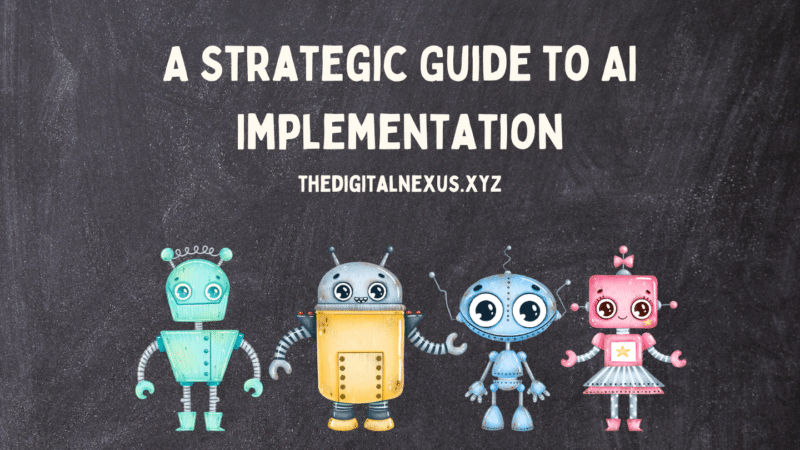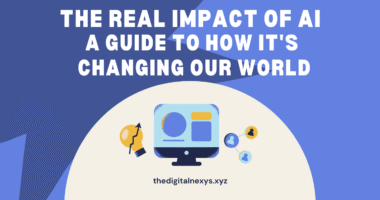Getting real value from AI requires a clear strategy, not just new technology. For many leaders, the path forward can seem complex. In reality, a successful AI implementation is more than a technical task; it is a major business change. This guide, therefore, offers a simple, phased framework to help you navigate the process. As a result, you can make better decisions, avoid common problems, and successfully adopt AI in your organization.
Phase 1: Pinpoint the Right Business Problem
First, it’s critical to avoid using technology just because it’s new. Instead, you must connect your strategy to a real business problem. Building a solution without a clear problem often wastes resources. For this reason, you should start by finding and agreeing on a key issue to solve.
Start with “Why,” Not “What”
To begin, find a clear problem or opportunity. For instance, maybe you want to shorten customer service response times. Or perhaps you want to improve your sales forecasts. A clear problem gives you a target. Additionally, it gives you a way to measure success for your AI implementation. You should also bring people from all parts of the business together. In doing so, you ensure the problem is a shared company goal, not just an IT project.
Assess Viability for your AI Implementation
Not every problem is a good fit for AI. Therefore, you must check if a solution is practical. For example, do you have the data you need? Also, is the potential return on investment (ROI) worth the cost? Ultimately, focusing on problems with a high impact and a high chance of success is the best way to start your AI implementation.
Phase 2: Data Strategy for AI Implementation
Data is the fuel for any AI system. In fact, the success of your entire AI implementation depends on the quality and availability of your data. Unsurprisingly, many good AI projects fail right here because of poor data preparation.
- Data Audit and Collection: To begin with, you need to find the data required for your project. This often means looking through different systems, like CRMs and ERPs. Sometimes, you may even need to create new ways to collect data if it doesn’t exist yet.
- Cleaning and Structuring: Next, remember that raw data is rarely usable. Indeed, it often has errors or missing information. Consequently, you will spend a lot of time cleaning and organizing your data. As experts like McKinsey point out, a strong data foundation is essential.
- Ensuring Data Governance: Finally, you must create clear data rules. For example, who owns the data? How is it kept safe? Also, how do you follow rules like GDPR? Answering these questions early in your AI implementation will prevent legal problems later.
Phase 3: Select the Right Technology Stack
Once you have a clear problem and clean data, you can then choose your technology. The market for AI tools is large, which can be confusing. However, your choice should be based on the needs you have already defined.
Specifically, the main question is whether to build your own solution, buy one, or partner with another company. For instance, building gives you the most control but requires a skilled team. On the other hand, buying a tool is faster but might not be a perfect fit. For this reason, many companies use a mix of these options. They might use a cloud service like Amazon Web Services for the foundation and then customize the final product. This is a key decision in any AI implementation.
Phase 4: From Pilot Project to Full-Scale Rollout
Jumping into a company-wide rollout is very risky. Instead, a smart AI implementation starts small, shows its value, and then grows from there.
To do this, your first step should be a small pilot project. The goal here is to test your ideas in a safe way. Furthermore, it lets you show real value to leaders, which helps get their support for a bigger launch. During the pilot, you should track your results closely. For example, was the AI model accurate? Did it help the business? After a successful pilot, you can then plan a wider rollout of the AI implementation. For more on this, you might find our article on AI’s societal impact an interesting read.
Phase 5: Governance and Ethics in AI Implementation
A purely technical AI implementation is not enough. To be truly successful, your strategy must also include a strong plan for governance and ethics. This is not optional; in fact, it is a key part of managing risk.
–
You need clear rules for using AI responsibly. For instance, how do you make sure your AI models are fair? Moreover, how do you explain the decisions they make? Creating a team to focus on ethics can help guide these rules. Ultimately, a focus on responsible AI builds trust with customers and employees. This protects your brand and ensures the success of your AI implementation.

Conclusion: A Continuous Journey of Improvement
In conclusion, a successful AI implementation is not a single project. Rather, it is an ongoing process of learning and adapting. Technology will change, and so will your business needs. For that reason, the best approach is to build a culture that supports trying new things and always improving. By following this strategic guide, you can move past the hype and unlock the real power of AI for your company.







